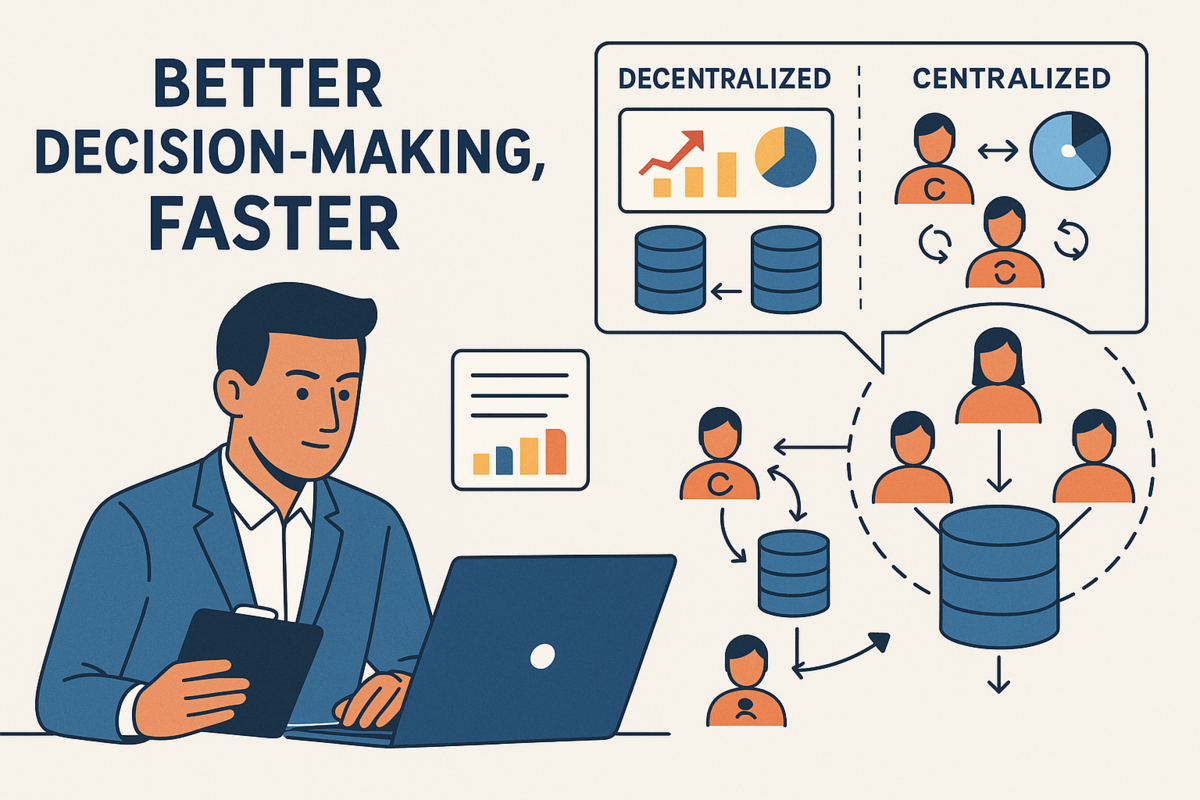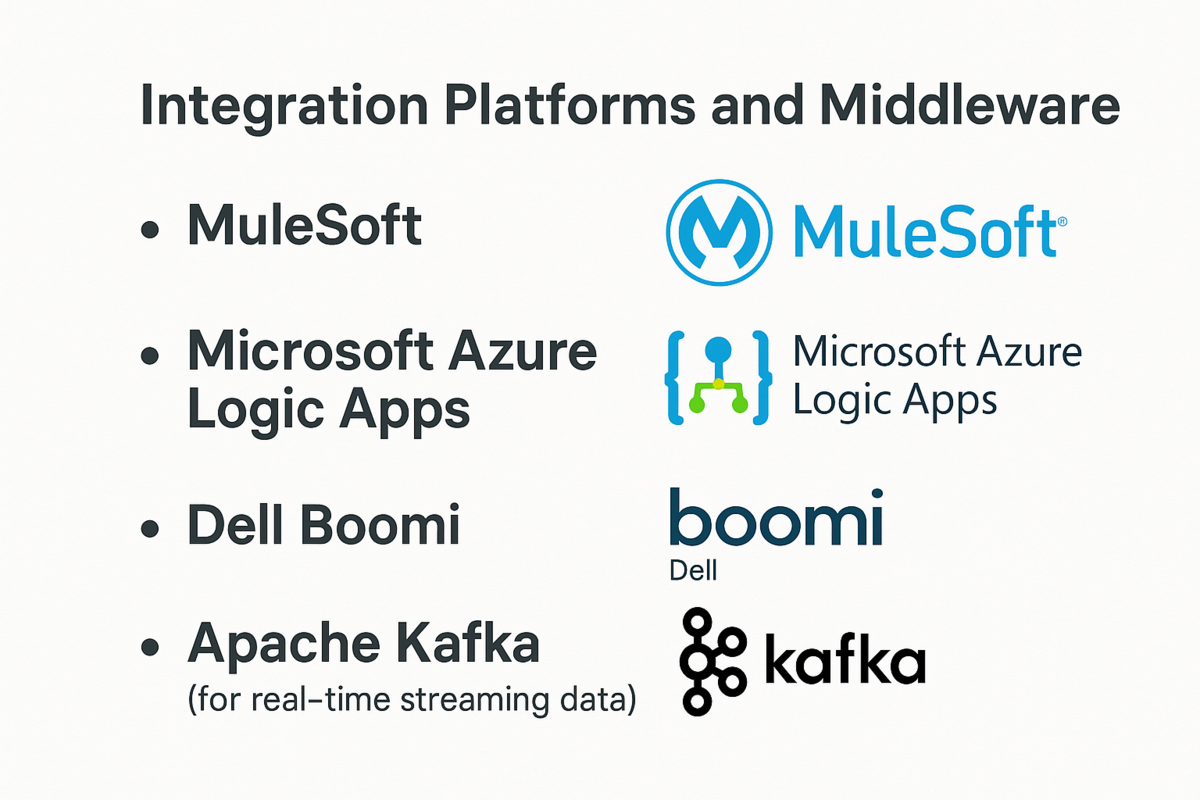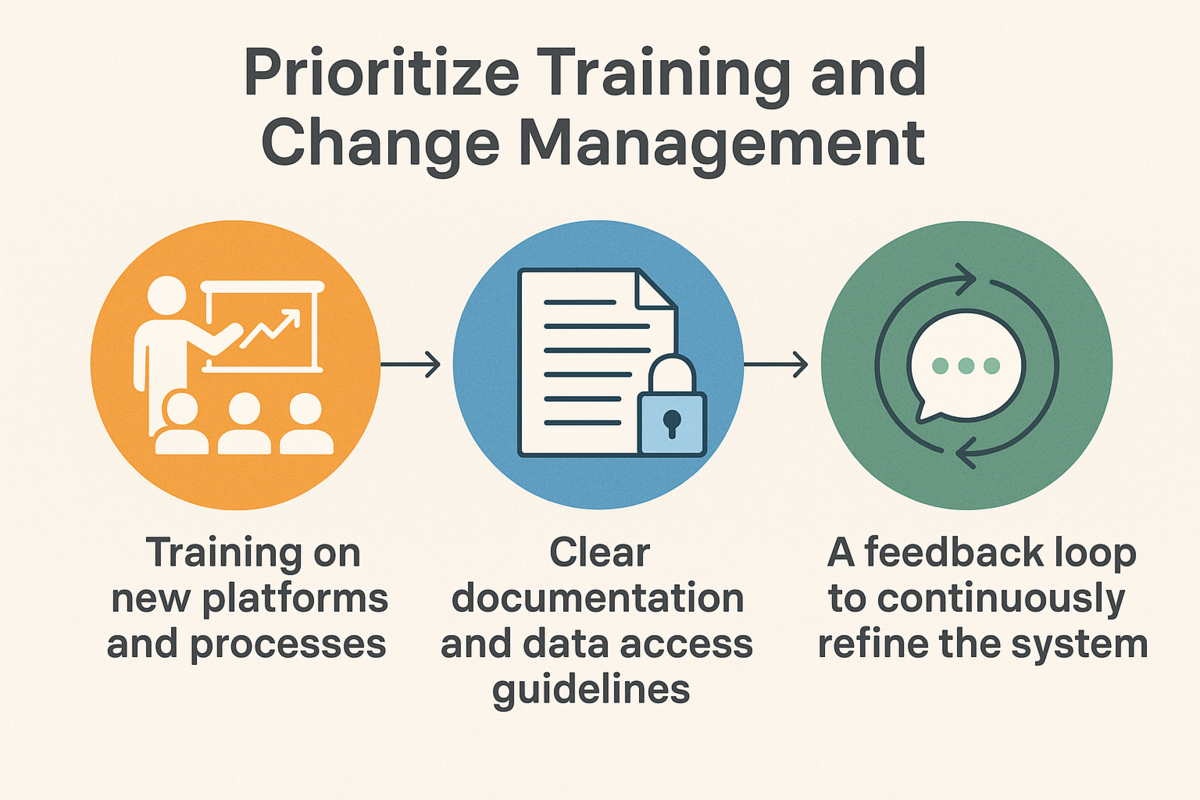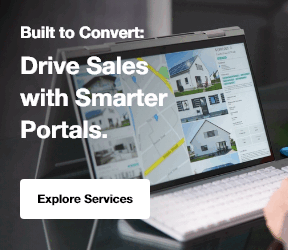Your data isn’t just growing, it’s exploding.
“By 2025, global data is expected to reach 181 zettabytes, up from just 64.2 zettabytes in 2020 (Source: Statista).
For organizations juggling data across multiple platforms, departments, and geographies, this rapid growth doesn’t just represent opportunity,it’s a ticking time bomb.”
Disparate data systems lead to inefficiencies, reporting errors, compliance risks, and missed growth opportunities.
In fact, bad data costs U.S. companies over $3 trillion every year (Harvard Business Review). Most of these issues trace back to one root cause: decentralized data management.
What is Centralized Data Management and Why is it Important? Centralized Data Management steps in, not as a “nice-to-have,” but as a mission-critical strategy. It’s not just about having all your data in one place.
It’s about making that data accurate, secure, accessible, and usable,organization-wide.
Today’s forward-thinking businesses are no longer asking “Should we centralize our data?”
They’re asking, “How fast can we do it without disrupting our operations?”
Breaking Down the Concept: Centralization vs. Silos
Think of your business data like a city. In a centralized city, everything flows through a coordinated infrastructure, transportation, power, and water, all linked for efficiency.
Now imagine a city where every neighborhood builds its own roads, power grid, and water system. That’s a siloed data environment.
What is Centralized Data Management?
Centralized data management is the practice of consolidating data from various sources, CRM systems, ERPs, customer portals, and legacy databases into a single source of truth.
This unified environment makes data more consistent, easier to govern, and readily available for analytics and business intelligence.
As a foundational element of Digital Transformation Services, centralized data management ensures that every department operates with synchronized, reliable information that supports smarter decisions at scale.
For example, businesses looking to enhance their website presence can easily integrate systems using the best website builders for small business, ensuring seamless data flow from digital marketing to product information management.
Silos: The Hidden Cost
Silos naturally form when departments operate independently, each using different tools and storing data separately. Marketing might rely on a different database than Sales. Finance might never sync with Operations. Over time, this creates fragmented records, duplicated data, and inconsistent reporting, undermining collaboration and slowing down decision-making.
In today’s competitive environment, this is more than a minor inconvenience. It’s a major liability.
5 Core Benefits: From Efficiency to Decision Intelligence
Centralized data management is more than a technical upgrade; it’s a strategic investment that drives performance, profitability, and future-readiness.
By streamlining how data is collected, stored, and accessed, organizations are empowered to operate with clarity and precision.
This is especially crucial when businesses are trying to increase conversion rate by delivering accurate, real-time insights across platforms.
This level of data integrity is especially vital for companies offering B2B Marketing Services, where audience insights, campaign data, and performance metrics must be aligned across platforms to ensure consistent execution and ROI.
Let’s unpack the core benefits in detail:
1. Better Decision-Making, Faster

In a decentralized environment, decision-makers are often forced to base critical choices on outdated, inconsistent, or incomplete data. The time it takes to verify reports, cross-check systems, and reconcile conflicting numbers slows down responsiveness and increases risk.
Centralized data management removes those roadblocks by providing a unified, real-time view of business operations. Executives, managers, and analysts alike gain instant access to reliable information, enabling them to act with confidence and agility.
In fast-moving industries like technology and manufacturing, this speed isn’t just a convenience; it’s a competitive advantage.
tat Insight: According to McKinsey, 74% of companies that leverage centralized systems report faster and more accurate decision-making.
2. Cost Reduction Across Departments
Disparate systems often result in overlapping tools, duplicated datasets, and time-consuming manual processes. Over time, these inefficiencies create a hidden drain on operational budgets.
Centralizing your data allows you to:
- Eliminate redundant software licenses and storage infrastructure
- Minimize manual data entry and reconciliation
- Reduce dependency on ad hoc workarounds and unsupported tools (often referred to as “shadow IT”)
The financial impact is twofold: lower direct costs and increased productivity across departments, from finance and operations to sales and marketing.
Additionally, teams can redirect their time and energy from data wrangling to high-value tasks like forecasting, optimization, and innovation. In sectors like Real Estate, where timely insights can make or break investment decisions, this shift toward strategic work is especially impactful.
3. Improved Compliance and Data Governance
Whether your organization operates under GDPR, HIPAA, SOX, or industry-specific standards, one of the biggest compliance challenges is data traceability, knowing who accessed what, when, and why.
With centralized data management, compliance becomes an embedded function rather than a reactive headache.
As businesses invest in solutions that can handle things like Product Information Management, they also ensure that data compliance and security are tightly managed.
A centralized system allows for:
- Consistent data classification and labeling
- Automated audit trails and activity logs
- Unified policy enforcement across systems
This not only reduces the risk of regulatory violations and associated penalties but also improves stakeholder confidence, especially among partners, clients, and auditors.
In regulated sectors such as Banking and Finance, where compliance requirements are strict and constantly evolving, this built-in governance is a non-negotiable asset.
4. Enhanced Data Security
When data is scattered across multiple platforms, each endpoint becomes a potential vulnerability. Fragmentation complicates monitoring, limits visibility, and increases the likelihood of breaches or accidental exposure.
Centralized systems strengthen your security posture by:
- Standardizing access control protocols
- Enforcing encryption policies at rest and in transit
- Simplifying user authentication and permission management
In the event of a breach, a centralized architecture makes it easier to isolate the incident, assess damage, and take corrective action, without unraveling your entire data ecosystem.
For companies handling sensitive intellectual property, customer information, or financial records, this centralized security model is essential. This is particularly true for Luxury Brands, where protecting customer identities, purchase histories, and high-value transactions is critical to maintaining brand trust and exclusivity.
5. Greater Scalability and Integration

As your organization grows, so does your digital footprint. Whether you're adopting new cloud platforms, integrating customer data streams, or connecting IoT devices, managing data at scale becomes increasingly complex.
Centralized data management creates the structural backbone needed for long-term scalability.
It enables:
- Easier integration with third-party tools and APIs
- More efficient data synchronization across environments
- A future-ready foundation for AI, automation, and advanced analytics
In other words, centralization isn’t a final destination; it’s the launchpad for digital transformation.
6 Key Technologies That Power Centralized Data Management
So, what is Centralized Data Management and why is it Important?
Implementing it isn’t just a mindset shift; it’s a technical endeavor that demands the right architecture, platforms, and tools. Fortunately, today’s tech stack supports unified data strategies that scale securely and efficiently.
As businesses continue to embrace advanced Technology solutions to streamline operations, centralized data management acts as the backbone that connects, secures, and synchronizes every system involved.
Here’s a breakdown of the core technologies driving successful centralized data management systems:
1. Data Warehouses and Data Lakes
At the heart of any centralized data strategy lies a data warehouse or data lake. While both are used to consolidate large volumes of information, they serve different purposes.
- Data Warehouses (e.g., Amazon Redshift, Snowflake, Google BigQuery) are optimized for structured data and fast querying. These are ideal for business intelligence and reporting.
- Data Lakes (e.g., Azure Data Lake, AWS Lake Formation) are more flexible and handle both structured and unstructured data, such as log files, multimedia, or sensor data from IoT devices.
Many modern enterprises use a lakehouse architecture, which combines the benefits of both for high-performance analytics and flexible storage.
This hybrid model has proven especially useful in the Automotive Industry, where structured ERP data and unstructured IoT telemetry must coexist for real-time diagnostics and product innovation.
2. Master Data Management (MDM) Platforms
Master Data Management tools ensure data consistency and accuracy across systems by managing your most critical entities, such as customers, products, suppliers, and employees.
Platforms like Informatica MDM, SAP Master Data Governance, and Stibo Systems create a unified view of these entities, resolving duplicates, correcting inconsistencies, and applying governance policies at scale.
MDM acts as a control center that ensures the data flowing through your systems is clean, current, and compliant, one of the pillars of effective centralization.
In industries like Food and Beverage, where inventory tracking, supplier data, and customer feedback must align precisely, MDM becomes essential for maintaining quality control and traceability.
3. Integration Platforms and Middleware

Centralization only works if your systems can talk to each other seamlessly. Integration platforms facilitate that conversation by bridging the gaps between various applications, databases, and cloud services.
Popular options include:
- MuleSoft
- Microsoft Azure Logic Apps
- Dell Boomi
- Apache Kafka (for real-time streaming data)
These tools enable both real-time and batch integration, ensuring your centralized data platform remains up to date without manual intervention. This is particularly valuable in the Media and Entertainment industry, where real-time content delivery, audience analytics, and campaign performance data must synchronize across platforms without delay.
4. Data Governance and Security Frameworks
Managing access and ensuring accountability are critical in a centralized model. That’s where governance platforms come in.
Solutions like Collibra, Alation, and Microsoft Purview offer data cataloging, policy enforcement, access control, and data lineage tracking.
Combined with enterprise-grade identity and access management (IAM) systems like Okta or Azure Active Directory, businesses can control who can access what,and monitor exactly how data is being used.
These tools support compliance while minimizing internal risk and misuse.
5. Cloud Infrastructure and Hybrid Cloud Platforms
Most modern centralized data management solutions rely on cloud-first or hybrid cloud strategies. Cloud platforms like:
- Microsoft Azure
- Amazon Web Services (AWS)
- Google Cloud Platform (GCP)
Hybrid cloud options allow businesses to maintain control over sensitive data on-premise while still benefiting from the flexibility of the cloud, an ideal model for heavily regulated industries like Oil & Gas or Financial Services.
Even Non-Profits, which often operate with limited IT resources, benefit from hybrid models by securing donor and member data on-premises while leveraging cloud tools for outreach, reporting, and collaboration.
6. Business Intelligence and Visualization Tools
Centralized data is only valuable if it drives action. That’s where BI tools come in. With platforms like Power BI, Tableau, or Looker, organizations can turn raw data into visual dashboards, executive reports, and predictive models.
These tools enable:
- Real-time monitoring of KPIs
- Self-service data exploration
- Cross-departmental alignment through shared insights
In essence, they are the final layer of the centralized data stack, translating information into strategy.
Bringing it all together:
Successful centralized data management doesn’t rely on a single tool; it’s an ecosystem. The goal is to create a connected infrastructure where your data flows, your teams collaborate, and your decisions accelerate. In fast-paced industries like Travel and Tourism, this kind of unified infrastructure enables seamless customer experiences, from real-time booking updates to personalized service delivery across platforms.
Real-World Example: Centralized Data Management in the Oil & Gas Industry
Let’s ground the concept in a tangible use case: the Oil & Gas sector, an industry where massive volumes of data are generated daily across exploration, drilling, production, and distribution.
Without centralized management, this data often remains trapped in isolated systems, geoscience platforms, SCADA systems, ERP software, and third-party logistics tools. The result? Delayed decisions, missed insights, and millions lost in operational inefficiencies.
Similar data fragmentation challenges are also common in Digital Marketing, where disconnected platforms for campaigns, analytics, and audience segmentation can lead to misaligned messaging and wasted budget.
Challenge: Disconnected Data Across the Value Chain
A multinational energy firm operating in multiple regions faced a common issue: each department managed its own data using siloed systems.
In fact, similar fragmentation can happen in industries like Digital Marketing, where disconnected platforms across campaigns, analytics, and user tracking can make it hard to gain cohesive insights.
Companies have to address this to ensure better data-driven decision-making, as seen in strategies for tracking users across the web, such as with DuckDuckGo vs Google.
The geology team used legacy applications for seismic data, while the drilling operations team relied on on-site data loggers. Meanwhile, the corporate team managed financials in an enterprise ERP platform that had no link to field activity data.
This lack of centralization caused:
- Conflicting reports during production planning
- Inability to forecast accurately due to misaligned data sources
- Data redundancy and compliance risks
Solution: Implementing a Centralized Data Architecture
To address these challenges, the company invested in a hybrid cloud data lake architecture integrated with:
- SCADA system outputs
- ERP and asset management systems
- Geospatial and geological datasets
Using Azure Data Lake as the foundation, they implemented Power BI dashboards to visualize field performance, integrated data governance using Microsoft Purview, and applied role-based access controls across departments.
For organizations already embedded in the Microsoft ecosystem, SharePoint Consulting often complements this approach by aligning content management and internal collaboration within the same centralized data strategy.
Outcomes: Transformation at Scale
The results were significant:
- 30% reduction in unplanned maintenance due to real-time visibility into equipment data
- 20% improvement in capital project forecasting
- Enhanced regulatory compliance with automated audit trails
- Faster cross-department collaboration, eliminating redundant reporting cycles
The most critical gain? Data confidence. Executives could now rely on consistent, accurate reporting that aligned financial, operational, and strategic goals, without second-guessing the numbers.
How to Implement It with Minimal Disruption?
Transitioning to a centralized data management system doesn’t have to mean tearing everything down and starting from scratch. With a strategic, phased approach, businesses can modernize their data architecture while maintaining continuity and minimizing risk.
This kind of intentional planning mirrors how Design Services are structured, starting with research, progressing through iteration, and ultimately delivering solutions that are both functional and user-centric.
Here’s how organizations can successfully implement centralized data management without disrupting daily operations:
1. Start with a Data Audit
Before centralizing anything, conduct a comprehensive audit of your current data landscape. Identify:
- Where your data lives
- Who owns it
- How it's being used
- What condition is it in (accuracy, consistency, duplication)
This step reveals gaps, overlaps, and areas of risk, helping you prioritize what to consolidate first and what to phase out over time.
2. Define a Clear Governance Framework
Centralization without governance is just chaos in a new format. Develop a data governance strategy that outlines:
- Ownership and stewardship roles
- Data access policies
- Validation rules and compliance protocols
This ensures your centralized system operates with clarity, accountability, and trust from the start. Much like in Creative Services, where clear workflows and approval structures are essential to producing consistent brand outputs, centralized data governance brings structure to otherwise fragmented systems.
3. Choose the Right Tools for Your Business Model
Not every organization needs the same solution. Your tech stack should align with:
- The complexity of your operations
- Regulatory requirements
- Integration capabilities with existing systems
For example, a manufacturing firm with legacy ERPs might benefit from a hybrid cloud solution that integrates with existing tools. At the same time, a digital-first SaaS company may opt for a full cloud-native architecture.
This principle also applies to Web Design & Development, where selecting the right CMS, front-end frameworks, and integrations can make or break scalability and performance.
Avoid over-engineering. Build only what you need today, but plan for scale tomorrow.
4. Adopt a Phased Rollout Strategy
Trying to centralize every data stream all at once can cause more disruption than progress. Instead, roll out the system in stages:
- Start with one department or data domain (like customer data or financials)
- Test workflows, access protocols, and dashboards
- Get stakeholder feedback
- Then expand to other areas
This controlled approach allows your teams to adjust gradually while maintaining momentum and reducing resistance.
This mirrors best practices in Search Engine Optimization, where iterative improvements,rather than sweeping changes,yield more sustainable and measurable results over time.
5. Prioritize Training and Change Management

Tools alone won’t drive transformation; people will. Equip your teams with:
- Training on new platforms and processes
- Clear documentation and data access guidelines
- A feedback loop to continuously refine the system
Communicate not just what is changing, but why, highlighting how centralized data will make their work easier, more impactful, and more strategic.
This is especially critical in industries like Oil, Gas, and Renewables, where operational complexity and safety standards demand that every team member fully understands and trusts the systems they rely on.
6. Monitor Performance and Optimize
Post-deployment, continuously measure the system’s performance against predefined KPIs:
- Time saved on data access
- Reduction in duplicate records
- Accuracy of reports
- User adoption rates
Use this data to refine processes, improve user experience, and drive ongoing value from your investment.
Centralization is not a one-time project; it’s a long-term strategy. But with the right planning and execution, you can turn it from a daunting IT initiative into a business transformation engine.
Conclusion: Make Your Data Work Harder, Smarter, and Together
So, what is Centralized Data Management and why is it Important? In a world driven by real-time insights and digital agility, centralized data management isn’t optional, it’s essential.
It empowers organizations to eliminate inefficiencies, improve compliance, reduce operational costs, and, most importantly, make decisions backed by clean, consistent, and complete data.
The shift from siloed systems to a unified data infrastructure marks a fundamental turning point. Businesses that embrace this transformation are not just staying current, they're positioning themselves for sustained growth, innovation, and competitive edge.
But transformation doesn’t happen by accident. It requires the right guidance, the right architecture, and a partner who understands your business as deeply as your technology.
As a full-service marketing, design, and application engineering agency, Centric helps enterprise clients integrate powerful data strategies into every layer of their digital ecosystem.
Our team brings together business insight, technical proficiency, and user-first design to deliver centralized solutions that scale with you.
From seamless integrations to governance frameworks and future-ready infrastructure, we ensure your data isn’t just managed. It’s maximized.








